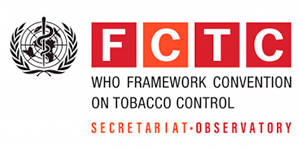June 5th, 2021, is World Environment Day. According to UNEP, we are the generation that can make peace with nature. As the world struggles with the worse pandemic ever, several discussions around environmental aspects linked to the surge of pandemics have emerged. According to an IPBES report released in October 2020, future pandemics will emerge more often, spread more rapidly, do more damage to the world economy and kill more people than COVID-19 unless there is a transformative change in the global approach to dealing with infectious diseases. The same human activities that drive climate change and biodiversity loss also drive pandemic risk through their impacts on our environment. Changes in the way we use land; the expansion and intensification of agriculture; and unsustainable trade, production and consumption disrupt nature and increase contact between wildlife, livestock, pathogens and people. According to the UN Secretary General, there is a framework for action – the 2030 Agenda for Sustainable Development and the Paris Agreement on Climate Change. A number of reports have followed. A report commissioned by the WHO FCTC Secretariat in 2019, concludes that tobacco’s environmental footprint, together with its negative health, social and economic implications, make it incompatible with the global sustainable development agenda, in particular SDGs 12 – responsible consumption and production, 13 – climate action, 14 – life under water, and 15 life on land. The report also describes several ways tobacco harms the environment: global cultivation of tobacco requires substantial land use, water consumption, pesticides and labour – all finite resources that could be put to better use. Harmful impacts include deforestation leading to climate change; water and soil depletion; human toxicity; ecosystem eutrophication; and acidification. Processing, the curing of tobacco leaves to produce dry tobacco, is highly energy intensive with use of coal or wood contributing to greenhouse gas emission and deforestation. Additional inputs and waste production occur with the transport and manufacture of cigarettes as well as their final use and disposal. Cigarette buts and the ENDS/HTPs batteries and devices are additional examples that show how the environment can be devastated by a product that roughly kills one in every two consumers. A product that is totally unnecessary to human beings. A product that is produced by an industry that uses child labor to make their profits, misleads the public with new generation products as a cessation panacea that keeps their consumers addicted to nicotine while enticing young generations, buys science and lobbies policy makers, decision makers and legislators. And, at the same time promotes itself as a supporter to human rights and the environment. Finally, in a world facing enormous pressures on natural resources, tobacco competes with valuable commodities that are essential for humanity and adds significant pressures on the health of our planet and its most vulnerable inhabitants. In the name of the present and future generations, we must do something about it. The WHO Framework Convention on Tobacco Control (FCTC) addresses the environmental concerns regarding tobacco in Article 18, which states that: “In carrying out their obligations under this Convention, the Parties agree to have due regard to the protection of the environment and the health of persons in relation to the environment in respect to tobacco cultivation and manufacture within their respective territories.” According to an article published by Thomas Novotny & al, our interviewee of today, the environmental lifecycle of tobacco can be roughly divided into four stages: (i) tobacco growing and curing; (ii) product manufacturing and distribution; (iii) product consumption; and (iv) post-consumption waste. Thomas Novotny is the invitee from CETAB/FIOCRUZ and CICCGT in commemoration of World Environment Day, 5th June 2021. He is well known in the global public health community for his research in the tobacco control field. Dr Novotny has studied extensively the environmental impact of the tobacco value chain and will share with us some insights about the topic.
- Português
- English
- Español

